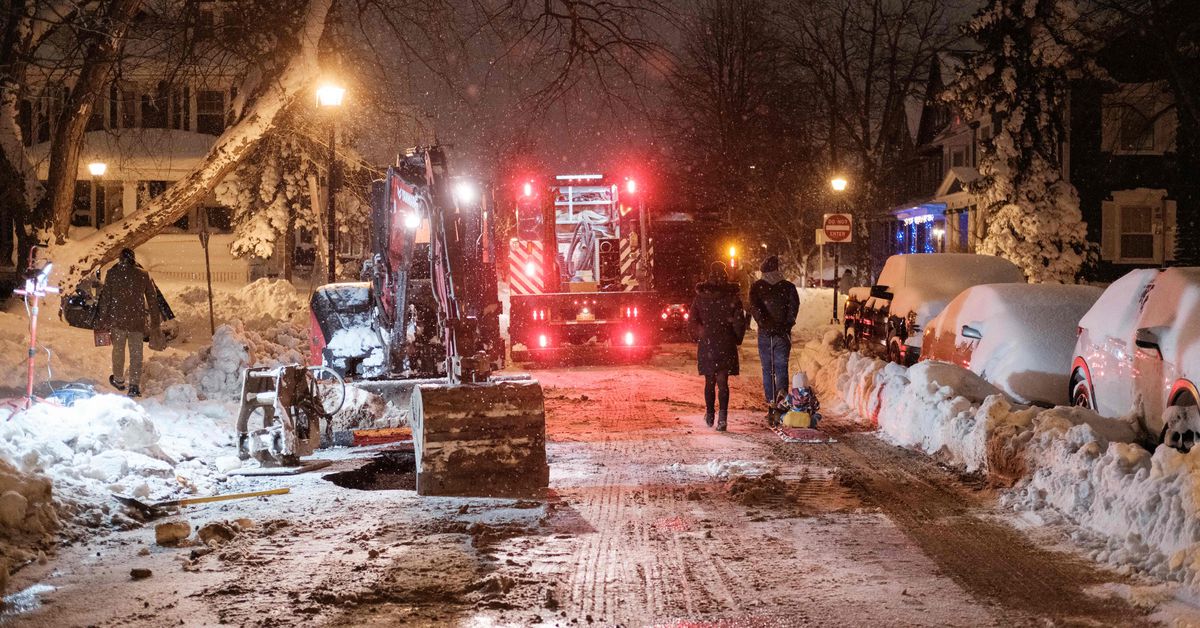
Two-thirds of the US population faced snowstorms, high winds, or frigid winter weather over the Christmas holiday weekend, leading to at least 52 deaths and pushing the electricity grid to the brink of failure. And in many instances, it did. At its peak on Christmas, an estimated 1.7 million businesses and homes faced power outages.
It was the coldest Christmas in recent memory, and that meant a predictable surge in heating demand as temperatures dropped. The Tennessee Valley Authority, which provides power for 10 million people, for instance, said demand was running nearly 35 percent higher than on a typical winter day.
In many states, utilities and grid operators only narrowly averted greater disaster by asking customers to conserve their energy or prepare for rolling blackouts (when a utility voluntarily but temporarily shuts down electrical power to avoid the entire system shutting down). Some of the largest operators, including Tennessee Valley Authority, Duke Energy, National Grid, and Con Edison, used rolling blackouts throughout the weekend. Texas also barely got through the emergency. On Friday, the US Department of Energy permitted the state to ignore environmental emissions standards to keep the power on.
One major transmission company that regulators thought would be well-prepared for the winter storm was caught off-guard: PJM Interconnection, which serves 65 million people in 13 eastern states, faced triple the power plant outages than it expected.
Officials probably could have met the higher demand if not for another predictable event that overwhelmed the system. Because of the extreme conditions, coal and gas plants and pipelines froze up too, taking them out of commission to deliver energy in areas that run mostly on gas.
The events over Christmas show how utilities and regulators continue to overestimate the reliability of fossil fuels to deliver power in a winter storm.
Frozen natural gas infrastructure cut into needed supply
It wasn’t that the country didn’t have enough gas to go around to meet the high demand. There was plenty of gas, but the infrastructure proved vulnerable to the extreme weather. Enough wells and pipes were frozen or broken to bring the grid to its brink.
For instance, for TVA, high winds, and cold temperatures affected equipment at its biggest coal plant and some of its natural gas-powered plants, according to the Chattanooga Times Free Press. “At one point Friday, TVA lost more than 6,000 megawatts of power generation or nearly 20% of its load at the time, with both units at TVA’s Cumberland Fossil Plant offline and other problems at some gas generating units,” the outlet reported.
It’s too early to know exactly the cause of power failures in every state, but some utilities struggled to generate enough power to meet demand. Early data from BloombergNEF shows that total heating and power-generation fuels for the county were about 10 percent below normal as of Monday.
The rolling blackouts and energy conservation alerts stemmed from the one factor big utility companies could still influence: consumer demand. Utilities asked millions of people to keep their energy usage low to get through the storms, by delaying laundry and dishwashers and keeping the thermostat running low.
This is a broad strategy known as demand response, where utilities attempt to shape electricity use by urging customers to change their energy use to avoid peak hours. But even those consumer alerts to reduce energy usage are a blunt, imperfect instrument. As my colleague Umair Irfan explained, rolling blackouts result in power reduction “across the board without regard for who is most vulnerable, what parts of the power grid are closest to the brink, or where the most effective cuts can be made.”
A focus on slashing energy demand has worked before for specific events — like when California and Texas experienced heat waves earlier this year. But there are better ways the US can prepare for peak demand in a winter storm or a heat wave. Part of the answer is better demand response, but that requires longer-term infrastructure investments in energy efficiency and smart meters.
This latest storm shows, yet again, that fossil fuels aren’t especially reliable in extreme weather. Yet so much of energy politics focuses purely on supply — the mining and extraction, and how much oil, gas, and coal is in reserve. It’s often taken for granted that this supply will always be accessible. In the meantime, we’ve failed to build more important infrastructure throughout our energy system; more energy storage, distributed power generation, interconnections across the major power grids, redundancy, and demand response are all needed. Simply adding more gas or coal to the grid won’t prevent blackouts from happening again in the future.

